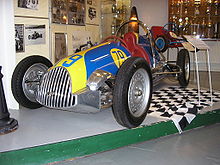When I first started watching motor racing at Oulton Park and Aintree in the mid-1950s most meetings included in the support races an event for the 500cc Formula 3 cars. These usually produced close and exciting racing and even the star Grand Prix drivers would frequently take part in the races. This is what Wikipedia says about the Formula:
'History
Formula Three (adopted by the FIA in 1950) evolved from postwar auto racing, with lightweight tube-frame chassis powered by 500 cc motorcycle engines (notably Nortons and JAP speedway). The 500 cc formula originally evolved in 1946 from low-cost "special" racing organised by enthusiasts in Bristol, England, just before the Second World War; British motorsport after the war picked up slowly, partly due to petrol rationing which continued for a number of years and home-built 500 cc cars engines were intended to be accessible to the "impecunious enthusiast". The second post-war motor race in Britain was organised by the VSCC in July 1947 at RAF Gransden Lodge, 500cc cars being the only post-war class to run that day. Unfortunately the race was a complete flop, as three of the seven entrants were non-starters, and, of the four runners, all but one were out of it in the first lap, leaving Eric Brandon in his Cooper Prototype (T2) trailing round to a virtual walk-over at the unimpressive speed of 55.79 mph, though his best lap (which was the fastest recorded for any 500) was 65.38 mph.
Cooper came to dominate the formula with mass-produced cars, and the income this generated enabled the company to develop into the senior categories. Other notable marques included Kieft, JBS and Emeryson in England and Effyh, Monopoletta and Scampolo in Europe. John Cooper, along with most other 500 builders, decided to place the engine in the middle of the car, driving the rear wheels. This was mostly due to the practical limitations imposed by chain drive but it gave these cars exceptionally good handling characteristics which eventually led to the mid-engined revolution in single-seater racing.
The 500cc formula was the usual route into motor racing through the early and mid 1950s (and stars like Stirling Moss continued to enter selected F3 events even during their GP careers). Other notable 500 cc Formula 3 drivers include Stuart Lewis-Evans, Ivor Bueb, Jim Russell, Peter Collins, Don Parker, Ken Tyrrell, and Bernie Ecclestone.
From a statistical point of view, Don Parker was the most successful F3 driver. Although coming to motor racing late in life (at age 41 in 1949), he won a total of 126 F3 races altogether, and was described by Motor Sport magazine (in his 1998 obituary) as "the most successful Formula 3 driver in history." Although Stirling Moss was already a star by 1953, Parker beat him more than any other driver, and was Formula 3 Champion in 1952, again in 1953, and in 1954 he only lost the title by a half-point. He took the title for a third time in 1959.
In 1954, Parker took on a young man named Norman Graham Hill as his mechanic and general assistant, and gave him his first taste of competitive motorsport in a 500cc car at Brands Hatch. Some years later, now using his middle name of Graham, this young man twice became Formula 1 World Champion (1962 and 1968).
Don Parker retired shortly after the 1959 season, having chosen not to move to Formula 2 or Formula 1, and thereafter raced only occasionally. However, he maintained his enthusiasm for fast cars, and in 1961 Jaguar built him a specially modified high-performance Mark 2 3.8 litre saloon. This car was reputedly the fastest Mark 2 ever built, having been tested at 140 m.p.h. on the recently opened (but still unrestricted) M4 motorway.
500cc Formula Three declined at an international level during the late 1950s, although it continued at a national level into the early 60s, being eclipsed by Formula Junior for 1000 or 1100 cc cars (on a sliding scale of weights).'
____________________________________________________________________________________________
Races for the 500cc cars are often a feature at Vintage and Historic car meetings and here are some photographs which I took at the Seaman Memorial Trophies meeting at Oulton Park in June 1982:




No comments:
Post a Comment